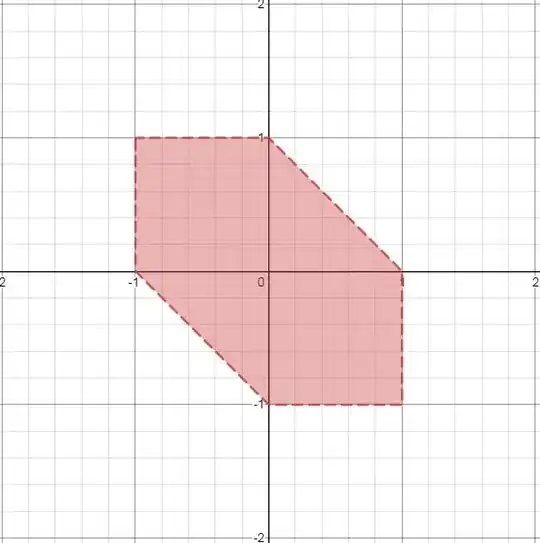Through the symmetry mentioned in the comments, we only need to compute the area for positive $x$, and then double the result.
The region can be split into $2$, based on $y>0$ and $y<0$.
For $y>0$, the region is given by $x+y+x+y\leq2$, which is the same as $x+y\leq1$, or $x\leq1-y$.
From $x+y\leq1$, it is obvious that $x, y\leq1$, otherwise $x+y$ would be greater than 1. The bounds for the double integration are then $[0, 1-y]$ for $x$, and $[0, 1]$ for $y$. The area of this upper region is then:
$$\int_0^1\int_{0}^{1-y}1dxdy=\int_0^1(1-y-0)dy=(y-\frac{y^2}2)|_0^1=1-\frac12=\frac12$$
Now, for $y<0$ the region becomes $x-y+|x+y|\leq2$. There are 2 cases here.
If $y\geq-x$, the region is $x-y+x+y\leq2$, or $x\leq1$. Then the bounds for the double integral are $[0, 1]$ for $x$ and $[-x, 0]$ for $y$ and the area is:
$$\int_0^1\int_{-x}^01dydx=\frac12$$.
And finally, if $y<-x$, the region becomes $x-y-x-y\leq2$, or $y\geq-1$. $y<-x$ means $x>-y$, therefore the bounds the double integral are $[-1, 0]$ for $y$ and $[-y, 1]$ for $x$:
$$\int_{-1}^0\int_{-y}^11dxdy=\frac12$$
The area for the full $y<0$ region is therefore $\frac12+\frac12=1$, which matches geometrically.
The total area is $2(\frac12+1)=3$. This would be somewhat less lenghty if we could somehow argue that for $y<0$ the region is the $[0, 1]\times[-1, 0]$ square, but I wasn't able to do that.
